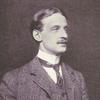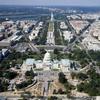More about Ulysses S. Grant Memorial

Sr. Contributor
This memorial to Ulysses S. Grant is the fourth-biggest equestrian statue in the world, and the second-biggest in the USA.
At the time, this was the largest bronze statue ever cast in the country and historian James M. Goode called it “one of the most important statues in Washington.” The statue honors President and General Ulysses S. Grant’s Civil War Service as Commander of the Union Army.
Grant was a complicated figure. Mary Todd Lincoln coined his nickname “the butcher,” referring to his reputation for sacrificing huge numbers of troops to win battles. He also liked a stiff drink or two...or three...or a dozen. His critics even alleged he was drunk during battles.
After the battle of Shiloh, the bloodiest battle in American history up to that point, people accused Grant of racking up senseless deaths while drinking on duty. Nevertheless, the Army of Tennessee (a Union division active in the Tennessee campaign) got the ball rolling for this statue, which in part commemorates Grant’s crucial role in the victory at Shiloh.
As president, Grant was no less controversial. Presiding over the Reconstruction Era, Grant was instrumental in defending the rights of the newly free Southern Black community, and was a fierce opponent of the KKK. (That awkward moment when a 150-year-old president could decide to disavow the Klan, but our current president can’t). On the other hand, he was soft on the rampant corruption that defined the Gilded Age.
His personal life also raised a few eyebrows, aside from the drinking. Though he fought for the Union, Grant’s wife Julia came from a plantation family and owned slaves. Grant himself owned a slave at one point, but freed him.
When it came to his marriage, however, he was a solid dude. Julia suffered a condition that gave her permanently crossed eyes, and when she considered corrective surgery, Grant objected, “Did I not see you and fall in love with you with these same eyes? I like them just as they are.” When Julia’s pet canary died in their courtship days, Grant made a miniature coffin for it and arranged a mock military burial with his West Point buddies to comfort her. Somebody build this guy a world’s best bae memorial!
No romance in this statue, though. Grant on his horse Cincinnati is the centerpiece. The southern flank depicts the artillery, and the northern flank a gritty cavalry charge. Look closely at the face of the unhorsed soldier being trampled in the cavalry section. Sculptor Henry Shrady used himself as the model.
Sources
- “Ulysses S. Grant Memorial,” accessed March 13, 2017, http://openbuildings.com/buildings/ulysses-s-grant-memorial-profile-326…
- James M. Goode, The Outdoor Sculpture of Washington, D.C.: A Comprehensive Historical Guide (Washington D.C.: Smithsonian International Press, 1974), 224,
- “Mary Todd Lincoln Quotes,” accessed March 13. 2017, http://rogerjnorton.com/Lincoln90.html
- Mike Kaplan, “Grants Drinking or...The Beast That Will Not Die,” Journal of Military History (2015): 1109-1119.
- John E. Gilman, “The Grand Army of the Republic,” Civil War Veterans’ Organizations (1910), http://www.civilwarhome.com/grandarmyofrepublic.htm
- William S. McFeely, Grant: A Biography (New York: W. W. Norton & Company, 1981), 368-369.
- H. W. Brands, The Man Who Saved the Union: Ulysses S. Grant in War and Peace (New York: Doubleday, 2012), 467, 470.
- Eric Foner, “The Man Who Saved the Union: Ulysses Grant in War and Peace’ by H. W. Brands (book review),” The Washington Post, November 2, 2012, https://www.washingtonpost.com/opinions/the-man-who-saved-the-union-uly…
- Gilbert King, “General Grant in Love and War,” Smithsonian, February 14, 2012, http://www.smithsonianmag.com/history/general-grant-in-love-and-war-946…
- Candice Shy Hooper, “The Two Julias,” New York Times, February 14, 2013, https://opinionator.blogs.nytimes.com/2013/02/14/the-two-julias/
- Eric, “General Grant And His Single Slave,” This Cruel War, October 26, 2015, http://www.thiscruelwar.com/did-general-grant-really-own-slaves/
- Stacy Conradt, “Why Ulysses S. Grant’s Wife Always Posed in Profile,” Mental_floss, January 27, 2016, http://mentalfloss.com/article/74226/why-ulysses-s-grants-wife-always-p…
Featured Content
Here is what Wikipedia says about Ulysses S. Grant Memorial
The Ulysses S. Grant Memorial is a presidential memorial in Washington, D.C., honoring American Civil War general and 18th president of the United States, Ulysses S. Grant. It sits at the base of Capitol Hill (Union Square, the Mall, 1st Street NW/SW, between Pennsylvania Avenue and Maryland Avenue), below the west front of the United States Capitol. Its central sculpture of Grant on horseback faces west, overlooking the Capitol Reflecting Pool and facing toward the Lincoln Memorial, which honors Grant's wartime president, Abraham Lincoln. Grant's statue is raised on a pedestal decorated with bronze reliefs of the infantry; flanking pedestals hold statues of protective lions and bronze representations of the Union cavalry and artillery. The whole is connected with marble covered platforms, balustrades, and stairs. The Grant and Lincoln memorials define the eastern and western ends, respectively, of the National Mall.
The Grant Memorial is a contributor to the Civil War Monuments in Washington, D.C., of the National Register of Historic Places. James M. Goode's authoritative The Grant Memorial in Washington, D.C. (1974) called it "one of the most important sculptures in Washington." It includes the largest equestrian statue in the United States and the fifth-largest in the world.
Check out the full Wikipedia article about Ulysses S. Grant Memorial












